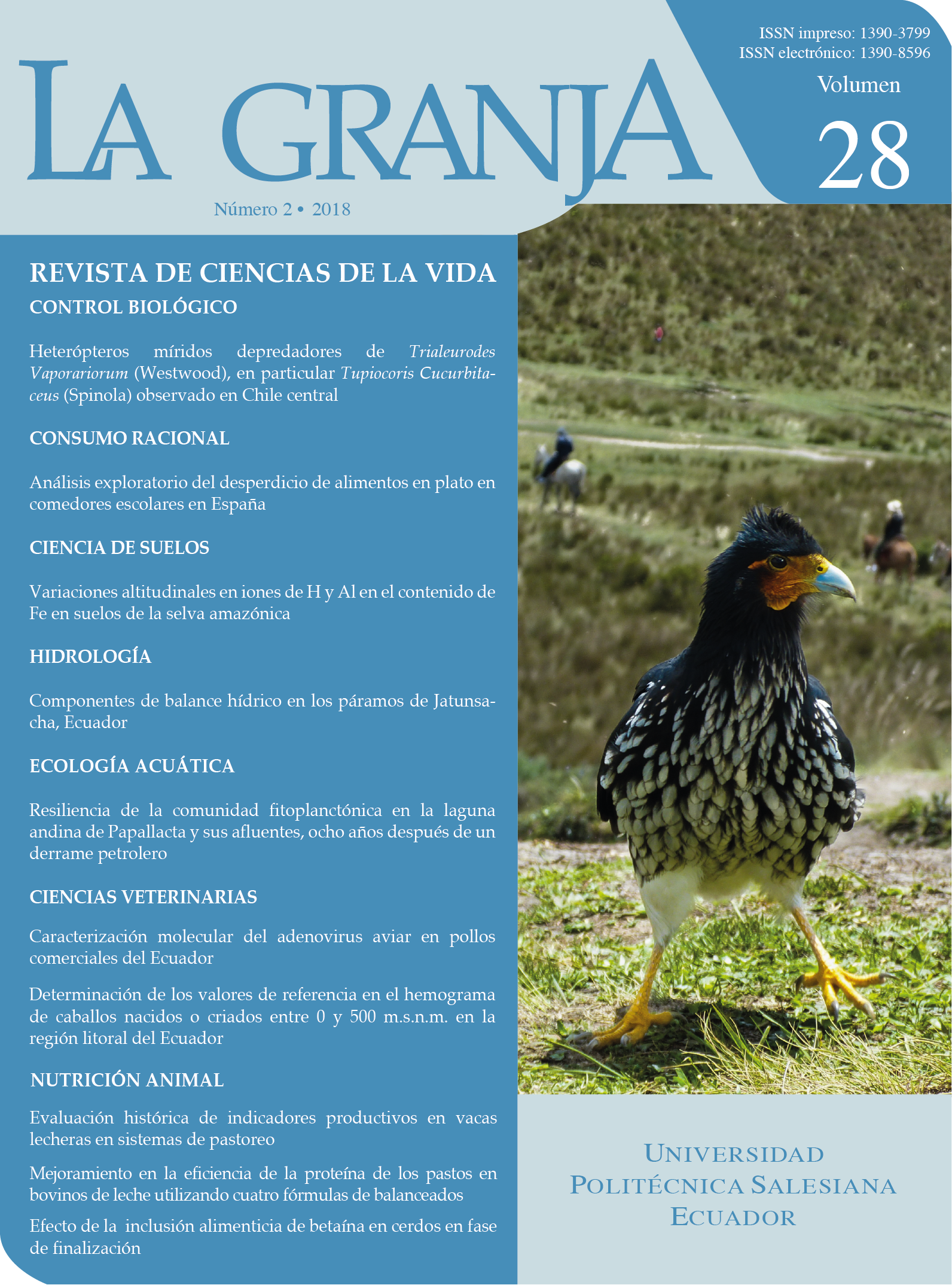Resilience of phytoplankton community in the andean Papallacta lagoon and its tributaries, eight years after an oil spill
Main Article Content
Abstract
In April 2003, there was an oil spill in the Papallacta zone (Ecuador: northern Andes), after the disaster bioremediation work was carried out in the lagoon and in its tributaries. We analyze the phytoplankton community as bioindicator of the current quality of the water body, considering 28 places in tributaries and in the lagoon, both in the dry season, transitional and rainy season, from December 2010 to July 2011, we identified and counted the genera of phytoplankton found in each sampling point, also considering the natural history of each group of algae. Diatoms, cyanobacteria and green algae were the major groups, the first of them was the most widely distributed with higher values in richness and abundance. The correlations between genera and abiotic variables showed differences related to seasonality. However, there was the constant presence of certain genera as Synedra and Oscillatoria, high organic load indicators. This research also provides information about the genera that now dominate both in the lagoon and its tributaries and the characteristics that influence their distribution and allow to determine the ecological health of Laguna de Papallacta, now it can be classified as mesotrophic. The presence of oil is restricted on specific points on the bottom of the lagoon, allowing that primary productivity in the photic zone develops normally.
Article Details
Section
Scientific Article
Universidad Politécnica Salesiana of Ecuador preserves the copyrights of the published works and will favor the reuse of the works. The works are published in the electronic edition of the journal under a Creative Commons Attribution/Noncommercial-No Derivative Works 3.0 Ecuador license: works can be copied, used, disseminated, transmitted and publicly displayed.
The undersigned author partially transfers the copyrights of this work to Universidad Politécnica Salesiana of Ecuador for the printed edition.

